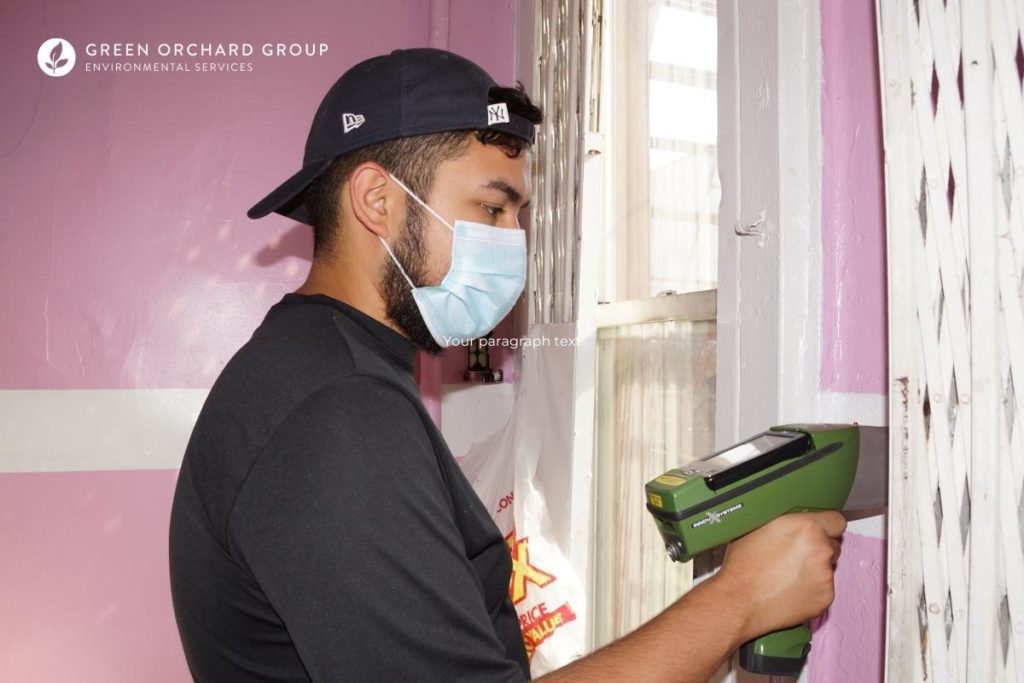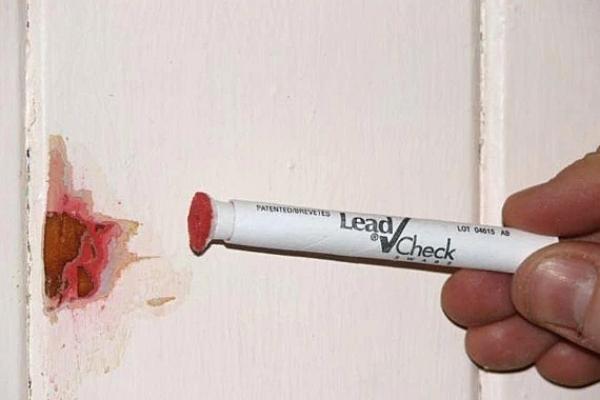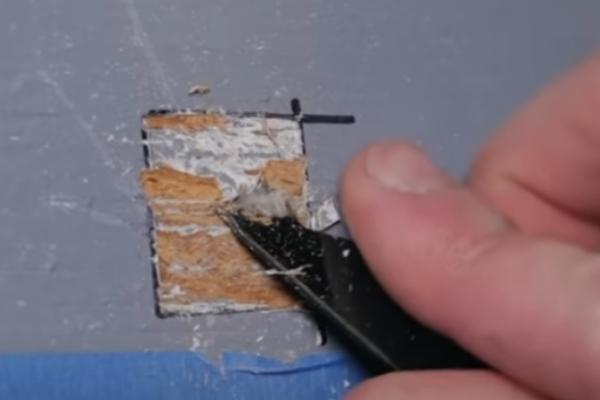
Lead-based paint is a common environmental hazard with serious health consequences, especially for young children.
According to the most recent American Healthy Homes Survey, 89% of homes built before 1978 are estimated to have had lead-based paint. That’s about 30 million homes across the United States.
Lead paint is particularly problematic in New York City, where almost 70% of the housing was constructed before 1960 (before the use of lead paint was banned).
Knowing how to test for lead paint in your house, apartment, or building is an important step to protect your family — or your tenants, if you’re a landlord (per Local Law 1).
How to Test for Lead Paint
There are 3 types of lead paint testing methods:
- Lead test kits
- X-ray fluorescence (XRF)
- Paint chip sampling
Home lead test kits are convenient and accessible to homeowners, but they are not as accurate or reliable as XRF or paint chip sampling. According to the EPA, chemical test kits cannot determine the extent of lead-based paint, and may not accurately discriminate between lead-based paint and other paint.
If you’re a landlord looking to satisfy lead testing requirements, only XRF or paint chip sampling are acceptable forms of testing.

1. Lead Test Kits
Home lead test kits use chemicals that change color when they react with lead.
There are several types available that can be inexpensively purchased at local hardware stores and online. The most common type uses a sodium sulfide or sodium rhodizonate solution applied to a notched surface or paint chip. Another type of lead test kit uses a swab that you rub onto a painted surface.
If the solution or swab change colors, it indicates that lead is present.
However, be aware that lead test kits are not always reliable, nor are they recommended by the EPA to determine if lead-based paint is present in a home where a child under 6 resides. Test kits that use sodium sulfide as a reagent are particularly susceptible to false positives (when the test falsely indicates the presence of lead paint).
If you want to use lead test kits at home, use one of the three lead test kits recognized by the EPA:
- 3M™ LeadCheck™
- D-Lead®
- State of Massachusetts Test Kit (Note: only available in MA)
Currently, EPA recognition means that these 3 tests satisfy the minimum criteria of having a 5% or less false negative rate, which is when the test falsely indicates that there is no lead when lead is actually present.
To minimize the risk of a false reading, it’s a good idea to test the same area 2 or 3 times. Getting the same reading twice lowers the chance of a false negative or false positive from 1 in 20 to 1 in 400. A third identical reading further lowers this chance to 1 in 8000.
Pros
- Inexpensive
- Easy to use
- Immediate results
Cons
- Not always accurate (may give false positives or false negatives)
- Does not quantify how much lead is present
- Only tests the surface layer; cannot detect lead in underlying layers

2. X-Ray Fluorescence (XRF)
X-Ray Fluorescence, commonly just called XRF, is a lead testing technique using a special handheld machine — which resembles a radar gun — operated by a trained and certified lead inspector.
XRF measures the amount of lead in old paint using high-energy beams to knock electrons out of orbit, which releases a certain amount of energy unique to each element.
An analyzer detects and reads these energy signatures to identify the presence of lead and convert it into a number representing the amount of lead per unit area (milligrams per square centimeter).
XRF is considered the gold standard in lead paint testing, allowing inspectors to take accurate and reliable measurements across many different surfaces in a relatively short period of time.
Approved XRF analyzers must be proven to test at the level of 0.5 milligrams of lead per square centimeter, which is the newest action level for defining lead-based paint according to Local Law 66.
For NYC landlords in need of XRF lead testing to clear an HPD violation, to satisfy Local Law 1 requirements, to verify turnover compliance, or to apply for a Lead-Free or Lead-Safe exemption, make sure that your lead inspector is using an XRF analyzer with an approved performance characteristic sheet (PCS) at an action level of 0.5 mg/cm².
Pros
- Accurate and immediate results
- Measures how much lead is present
- Nondestructive — does not damage the painted surface
- Can efficiently test a large number surfaces in a short period of time
Cons
- More expensive than lead test kits — XRF machines can cost more than $15,000
- Needs to be operated by a trained and certified lead inspector
- Can’t be used to test irregular or damaged surfaces

3. Paint Chip Sampling
Paint chip sampling involves removing paint chips (samples) from various surfaces and sending them to an accredited lab for analysis. Samples typically must be at least 4 square inches in size for accurate testing.
At the lab, atomic absorption spectrophotometry (AAS) or inductively coupled plasma (ICP) is used to test the sample for presence of lead. The results are reported in terms of lead percentage by sample weight.
If the amount of lead in the sample exceeds 0.5% (5,000 parts per million lead by dry weight), the paint is considered to be lead-based paint.
During the sampling process, all layers of paint must be removed together. The older layers of paint underneath the surface layer are more likely to contain lead. This is important to note, especially for old buildings which are more likely to have surfaces that have been repainted over.
After taking paint chip samples, areas where samples were removed should be repaired to minimize the risk of exposure in case the paint does contain lead.
Pros
- Most accurate way to test for lead
- Can be relatively inexpensive if you’re only testing a few surfaces
Cons
- Sampling requires disturbing or damaging surfaces
- Surfaces need to be repaired after sampling
- Slow results — it can take several days to weeks, depending on the lab
Need Lead Paint Testing in New York City?
Green Orchard Group is a leading provider of environmental services in New York City. We specialize in certified lead assessment and remediation services, including fast and reliable XRF lead paint testing and inspections.
If you’re a landlord or homeowner in need of lead paint testing, learn more about our XRF lead testing services here!
To ask questions, request a quote, or schedule an appointment, call us at (212) 219-8261 or click the button below to send a message through our contact form.
